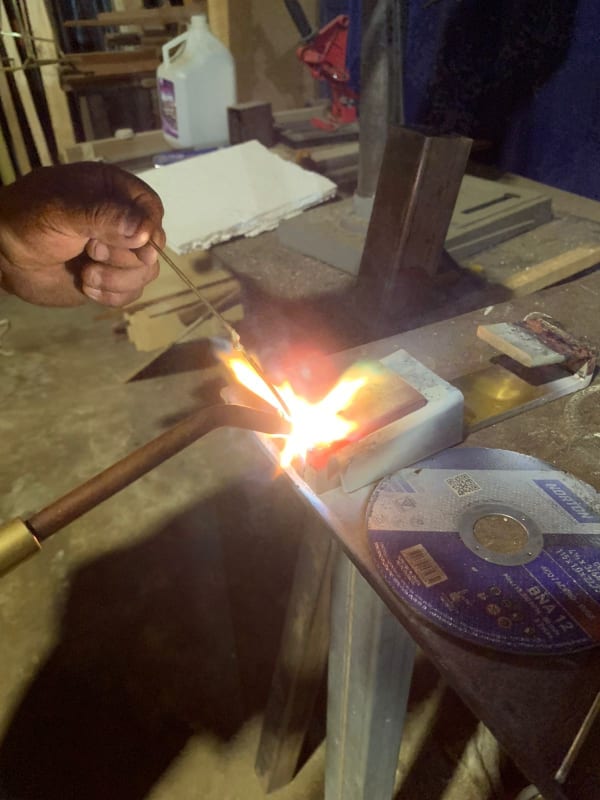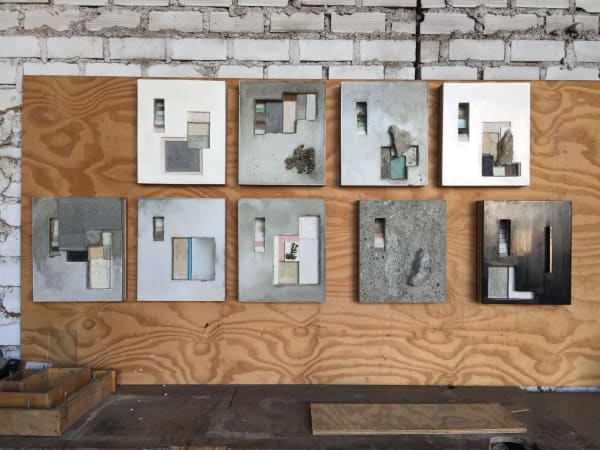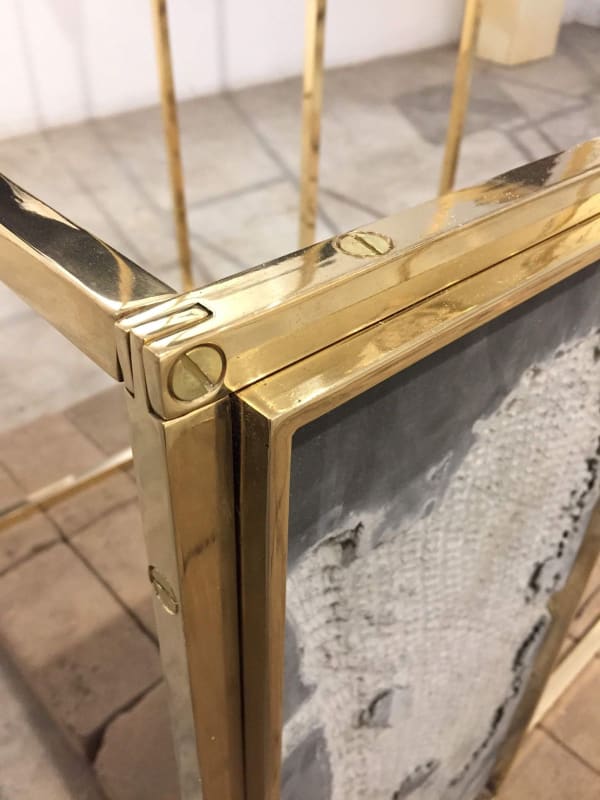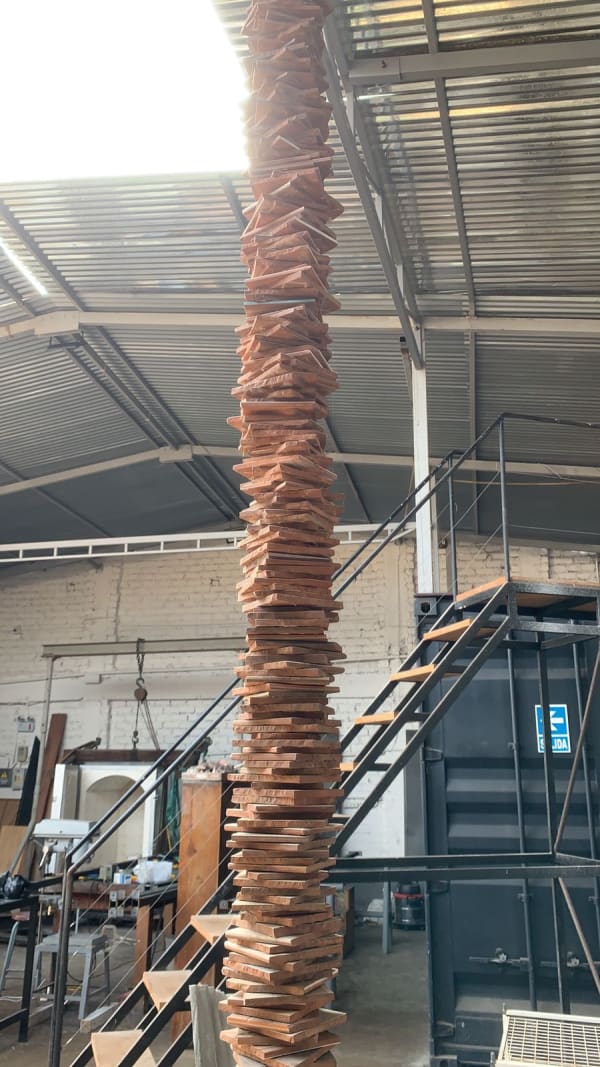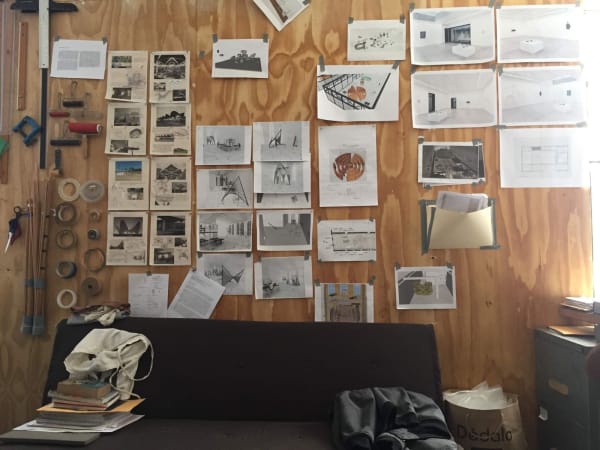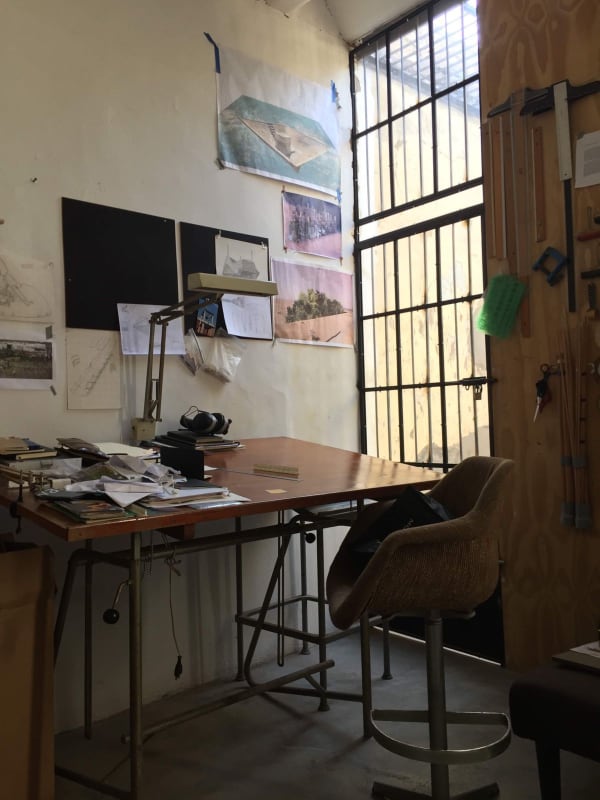Coinciding with his first solo exhibition in the Middle East Boundary Space, Lima-based sculptor Ishmael Randall Weeks explains his array of philosophical and design inspirations, from Incan navigation systems to Malevich, and from the Bauhaus movement to Peruvian marketplaces.
Interviewed by Zoya Zalatimo - March 2021
In your practice you reference various historical periods such as Russian Constructivism and ancient pre-Columbian civilizations, how were you initially drawn to these subjects?
My references are many, across different ages and places. My work navigates ideas around the social and the communal. I look to the past such as the Incan Empire as much as I look to figures in Russian constructivism, primarily Malevich with his structural systems. I believe the Incans and Russian Constructivists are related in their quest for purity and form, as I see the world as interconnected and cyclical. In these past cultures, there are specificities in design from an artistic standpoint that create a cyclical momentum. I am fascinated by the Incas and their ceque system in particular, which is comprised of lines and pathways that originate from the Qorikancha at the centre to the edges of the land, going through the mountainous landscape of the former empire. Much of my work is about this navigation system and the Ushnu ceremonial pedestals found along those ancient paths. In as much as I am interested in these pre-colonial systems and Russian Suprematism as a movement, I am also inspired by the Bauhaus movement, which combined pure form and design. There is something about striving to attain a better society from that time period that intrigues me.
Your series of smaller wall sculptures are titled Codigos Atemporales, which roughly translates to a timeless or universal code, can you tell us more about the significance of this name?
The Codigos function like time capsules, each layer signifies a place and brings it to life. It's my way of documenting the days and paths I take. I collect soil and materials from all over, then I record their date and time, take them back to the studio and transform them into Codigos Atemporales. What’s interesting to me about the codigos is similar to what I find intriguing about the mystery of the ceque system. Within the framework of the codigos, there is a sense of mystery in the layers; they are pockets of information that hide a whole history. I think you can feel that energy.
How did you arrive at this layered format of the Codigos?
I had been collecting objects on my walks for a while and I liked the idea of layering that I do with my tile work. Whether it a piece of asphalt or dust from woodworking, I started thinking about the memories the materials hold. Actually, a lot of memories came back from materials in my childhood, such as chalk from schools, the color blue from hospitals, certain sands from different places. There is a sense of familiarity with the materials that I wanted to integrate into my works. I liked the idea and process of walking to discover a place. I even began using a similar system to the ceque maps from Cusco to create walks/paths out of my studio in Lima in order to find materials, to discover a place, city, or a conversation.
You have mentioned that the Codigos Atemporales are created based on conversations you have with people in your hometown Lima - can you tell us about those experiences?
All of the conversations that I reach through my walks are fascinating to me. Whether it’s in the market or at the corner store, it’s quite funny when you’re asking a stranger to take a scraping off their wall to take back to your studio. Markets here are fairly chaotic and most of them typically have a shamanistic ritual stall where you can buy healing materials such as cactus products, hallucinogens, oils and ointments for ailments and others to ward off bad spirits. Conversations with those peddlers of snake oil have always been interesting; I appreciate the multiple uses of the items they sell.
I am also very interested in the olfactory by way of the world of spice traders and tracing where their products come from; The amazon, the Andes, Brazil, China, the Middle East, Africa, and so on. A lot of my works contain a layer based on a conversation I had with the spice salesman. Smells also have the power to provoke a specific recollection of a past time. This concept reminds me of the historic madeleine anecdote in Proust’s novel À La Recherche du Temps Perdu or In Search of Times Past - where he tastes a madeleine that takes him back in time, unlocking a flood of childhood memories. The codigos are trying to collate all these elements that signify a place and bring it to life, which might trigger a Proustian involuntary memory.
What is the concept behind the books enveloped in your sculptures?
One of the works I will be showing contains a book by French philosopher Jean Baudrillard, Simulacra. I have also used books on are history, anthropology, as well as self-help books. They are books that for multiple reasons have meaning in my research and go with my moods. Some I have read, others intrigue me because of the title, and others simply need to be in the work.
I believe strongly in capturing the reality of the material, so you can feel the weight, structure, colour and density of the material. I’m putting together elements that deal with life in all its forms and shapes, trying to create a record in the same way a photographer would.
Is there something you hope the viewer to take away from your works?
The basic philosophy of my work is that hopefully the energy I put into it is transmitted to the viewer. Art is something that we should be able to have a dialogue about, it is a mirror of our own reality. If I can say anything about my work is its a mirror of us.
